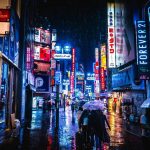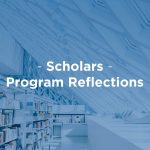Lessons from the Rose Fellowship: John Hodgson
The ULI Daniel Rose Center for Public Leadership spoke with 2010–2011 Alumnus Fellow John Hodgson, founder and president of Sacramento, Calif.-based The Hodgson Company about his experiences with the fellowship program. Hodgson continues to be involved with the Daniel Rose Center and attended several of the 2013–2014 San Francisco Study Tour events.
Rose Center: The year-long fellowship program facilitated a series of study visits that enabled you and the other Sacramento fellows to learn from other cities, and it also brought land use and development experts from around the nation to address a challenge you had identified in Sacramento. Three years later, what is the legacy of the Rose Fellowship in your city?
In Sacramento, when the study visit looked at our city’s particular issue — an old rail yard that we were trying to revitalize — what [the other Daniel Rose Fellows and advisers] presented to the community was extremely helpful. They made some observations and recommendations that gave our own community what I call the “a-ha moment.” We said, “Wow, we really ought to be looking at this site not just as a rail yard, but as a comprehensive transit center.” We have to be flexible.
What do you have planned for the Railyards?
Sacramento, believe it or not, is actually the 7th or 8th busiest rail station in the United States. It’s got an old, funky, but kind of cool train station, and it’s now in the process of being completely renovated. There are quite a number of old buildings that were used for construction and repair, manufacturing of rail cars and locomotives.
In 2011, with significant state dollars and some federal dollars, the city began some major infrastructure improvements, including the rerouting of the track that comes into the yard, a super big job. There is already a fair amount to see in terms of infrastructure; there are these absolutely cool new bridges that are going up over the tracks. Soon you’ll be able to walk or drive into the Railyards — something you’ve never been able to do before, ever.
[The site is] now ready for buildings to go up. There are proposed housing developments [to be built at the site], which as a condition of state bond money will be mostly affordable housing.
An earlier version of the rail yard plan also included an arena.
At the time [of my fellowship year] we were also considering the Railyards as a site for the Sacramento Kings. Halfway through the year, the Kings ownership was talking about leaving town, and so our project quickly morphed into a question of “could we include an arena in the Railyards development?” The answer was yes, we could, but not without some challenges.
It didn’t happen, of course, but what did happen was just as significant. Originally, people had hoped the arena would go into the old Downtown Plaza site, an old shopping center that had become mostly vacant. Fortuitously, this is what happened. The Downtown Plaza owners sold to a new owner, who committed to building a major entertainment complex which, conservatively, we believe could generate over a couple billion dollars in related development in the next ten years. As a developer, I’ve seen more happen in the last six months than in the past decade.
But this is significant because, I think, the Daniel Rose Center was a contributing factor in the renaissance of Sacramento’s downtown. They helped crystallize the city’s belief that we can work together, that things can be designed well, that we could come up with a feasible program. Now, we are about to start building what could be the nicest entertainment sports center in the nation.
What other experiences did you have during your fellowship year?
The Rose Center staff was very good at finding study locations that were particularly relevant to our group [which included fellows from Charlotte, Detroit, and Houston, as well as Sacramento]. In Toronto we made some very substantial observations on what worked and what didn’t. In Denver, particularly, they have a 15-year head start on us, but their downtown rail yard area is amazing.
You came to San Francisco in 2013 to participate in some of the events of this year’s fellowship program. Would you recommend the Daniel Rose Fellowship to other invited cities in the future?
I believe that you have to work hard to do the best for your community, always be reaching out to the best and the brightest. “Public-private partnership” is a phrase that is probably overused, but nearly everything that we do requires collaboration and cooperation among any number of entities.
I really feel that this program was as professionally rewarding as anything I’ve been involved in. The very high quality of the educational experience attracted me from the start, being able to meet with very key public and private sector representatives and have candid conversations about what works.
I’m like many ULI types — inquisitive and curious and always wanting to know what’s going on. This stuff fascinates me.
This interview was conducted by Timothy Boscarino of Issue Media Group.



